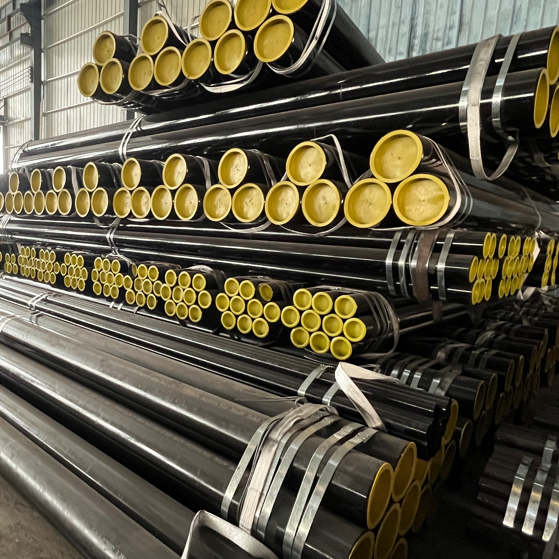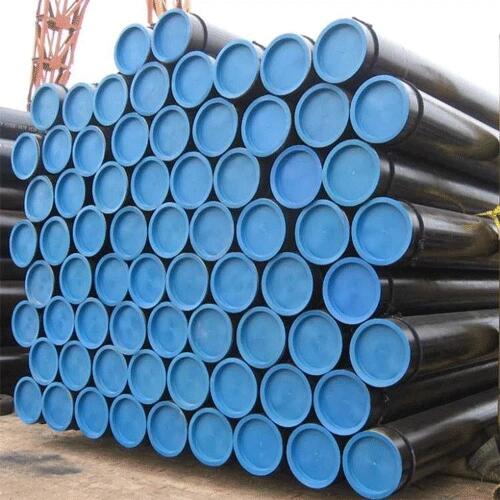For the storage of thick walled seamless steel pipes, we also need to pay attention to some details.
We should choose to store in a clean and unobstructed area, away from factories and mines that produce harmful gases or dust. On the site, weeds and all debris should be removed, and thick walled steel pipes should be kept clean.
In the warehouse, materials that are corrosive to thick walled steel pipes such as acid, alkali, salt, cement, etc. should not be stacked together to prevent confusion and mutual corrosion. Different types of thick walled steel pipes should be stacked separately to ensure the suitability of the storage environment.
Large section steel, steel rails, steel plates, large diameter thick walled steel pipes, forgings, etc. can be stacked in the open air, while small and medium-sized section steel, wire rods, steel bars, medium diameter thick walled steel pipes, steel wires, and wire ropes can be stored in well ventilated material sheds, but must be covered with tarpaulins and cushions. For some small thick walled steel pipes, thin steel plates, steel strips, silicon steel sheets, small diameter or thin-walled thick walled steel pipes, various cold rolled and cold drawn thick walled steel pipes, and expensive and easily corrosive metal products, we can store them in storage.
At the same time, warehouses should be selected based on geographical conditions, generally using ordinary enclosed warehouses to ensure the suitability of the storage environment.
Finally, we need to pay attention to the principle of stacking, following the principle of first in, first out, and ensuring that under stable and safe stacking conditions, materials of different varieties should be stacked separately according to their variety and specifications to prevent confusion and mutual corrosion.
At the same time, we should pay attention to storing items that have corrosive effects on thick walled steel pipes near the stacking position. It is prohibited to stack them too high. Generally, the stacking height should not exceed 1.2m for manual operations, 1.5m for mechanical operations, and 2.5m for stacking width. A certain passage should be left between the stacks, with an inspection passage of generally 0.5m. The entry and exit passage depends on the size of the material and the transportation machinery, which is generally 1.5-2.0m. The height of the pile foundation also needs to be determined according to the specific situation.
 Is API 5L Black Steel Pipe Good For Air Lines?
Is API 5L Black Steel Pipe Good For Air Lines?
 8 differences between ASTM A312 304 and 316 stainless steel pipes
8 differences between ASTM A312 304 and 316 stainless steel pipes
 How to drill holes in ASTM A179 seamless steel pipes?
How to drill holes in ASTM A179 seamless steel pipes?
 What are the advantages of cold drawn ASTM A192 seamless steel pipe?
What are the advantages of cold drawn ASTM A192 seamless steel pipe?